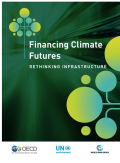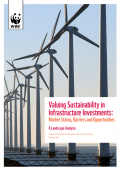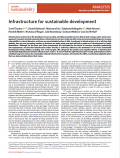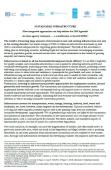
Infrastructure worldwide has suffered from chronic under-investment for decades and currently makes up more than 60 percent of greenhouse gas (GHG) emissions. A deep transformation of existing infrastructure systems is needed for both climate and development—one that includes systemic conceptual and behavioural changes in the ways in which we manage and govern our societies and economies.

This report, which is based on 20+ interviews with investors and other stakeholders, explores the reasons for the slow progress of Environmental, Social and Governance (ESG) integration in infrastructure investments by private investors and evaluates the emerging field of publicly available tools that seek to make the sustainability impacts on and from infrastructure projects tangible for investors.

This paper, Infrastructure for Sustainable Development, analyses the role of infrastructure in directly and indirectly impacting progress on achieving the Sustainable Development Goals (SDGs), and provides evidence of both the threat and opportunity infrastructure presents to reaching the global goals.

Integrating nature into mainstream infrastructure systems can produce lower cost and more resilient services. This report guides developing country service providers and their partners on how to seize this opportunity. It reviews approaches and examples of how to integrate green infrastructure into mainstream project appraisal processes and investments.

This interagency statement issued jointly by seven UN agencies calls upon all stakeholders involved in the infrastructure lifecycle to support an integrated approach to the development of sustainable and resilient infrastructure to accelerate the SDGs and 2030 Agenda.
